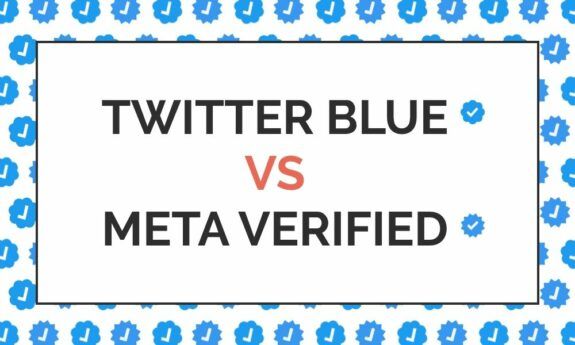How to Use ChatGPT & Google Bard for Content & SEO

To say that AI’s takeover of the marketing conversation has been monumental, may be an understatement. In just a few short months, ChatGPT, Bard, and various other AI tools for generating content have taken the entire digital marketing industry by storm, each being heralded as the end-all solution.
But are they really going to displace copywriting and SEO experts or are they fantastic tools that can make traditional marketing services more comprehensive and thorough? And how will these AI wunderkinds impact Google search results and how businesses are ranked on the SERPs? Will this lead to a major seismic shift in how businesses market themselves, and from there, how Google monetizes its search engine?
The answer to these questions is simple — we don’t know! But what an exciting time to be involved in a dynamic industry that’s shifting daily. What we do know is change is inevitable and learning how to use these new tools is crucial. Let’s take a look at the good, the bad, and the ugly of ChatGPT and Bard, and, more importantly, how to use them effectively for content and SEO.

Benefits vs Flaws – Using Bard & ChatGPT for Copywriting and SEO
When looking at ChatGPT and Bard, there are many things they do very well (remarkably well, in fact) but no system is perfect, so there are flaws that are worth considering when using AI content generation. Let’s look at some of their attributes as well as some of their drawbacks or limitations to get a well-rounded understanding.
Both ChatGPT (powered by Open Source’s GPT-3.5) and Bard (powered by Google’s LaMDA) are trained on vast libraries of data, with one critical difference. Bard draws information directly from the web to provide high-quality responses that are relevant results today, while ChatGPT is trained on information that was available as of September 2021. (If you’re a Microsoft Bing fan, a new version of Bing was released in late February 2023 that uses ChatGPT to create in-depth search answers using Bing’s search results.)
That doesn’t mean that Bard is superior to ChatGPT, in fact, ChatGPT tends to give more in-depth answers using more advanced language skills. Just be aware that ChatGPT, on its own, can’t use current search results in its answers. But don’t take our word — ChatGPT will tell you that up front in any response to a query that may require something it can’t provide.
So, with that understanding, let’s look at some of the benefits and drawbacks of AI large language models for copyrighting and SEO from the perspective of ChatGPT and Bard.
1. Productivity
AI allows you to generate copy quickly for all types of marketing materials and content, including outlines, social media posts, blogs, white papers, emails, product descriptions, landing pages, even budgets — the list goes on. The downside is that the copy, while well-written with proper grammar and sentence structure, tends to lack personality or spark. Just the facts, ma’am!
This can be good to create a base or outline to work from, but a copywriter is needed to give each piece character and inform a sense of individualism or voice. Additionally, the content created will lack strategic insight, so in-depth market analysis or brand specific emotion-driven content may not translate until finessed or polished by a human copywriter.
Another potential risk is that keyword optimization and SEO practices may suffer. Your content needs to project E-E-A-T – Experience, Expertise, Authoritativeness, and Trust – to rank well. While your AI-generated content may be factual, it almost certainly can’t convey experience and expertise or understand the context without a little fine tuning.
2. Creative Content
Both ChatGPT and Bard are capable of generating engaging and creative content. The more detail and color you provide, the more unique and interesting the results on everything from website page content to song lyrics.
The downside — if you were to ask the same query on either ChatGPT or Bard multiple times, there is an excellent chance that you would get the same (or very similar) responses. While that’s great for consistency, that means there could be numerous users using the same keywords/query and creating multiple instances of duplicate content online which is devastating for SEO performance.
3. Versatility
ChatGPT and Bard can both generate copy that speaks to a wide variety of industries and niche markets, while also adapting the writing style, voice, and tone based on the specific parameters you have entered into the query. AI tools like ChatGPT and Bard can also bring language accuracy. Copy will almost always be grammatically correct and smooth with no errors in syntax. Also, keywords can be optimized and adapted within the content, although a human copywriter should be used to ensure it reads in a fitting way.
To guarantee that your piece reflects your personality or specific writing style, you will need to add the humor and style required to make it your own. AI simply has limited contextual understanding and can’t generate an emotional appeal like a human copywriter.
4. Cost Effectiveness
At this point in time, ChatGPT and Bard are free services – although ChatGPT does offer a subscription service with ‘Pro Features’ including GPT-4. So, at least for now, using AI can be very economical especially for small businesses and startups who want to generate content without incurring the full expense of a copywriter.
5. Risk of Inaccuracies & Ethical Concerns
Chatbots powered by GPT-3 or Bard may produce content that contains factual inaccuracies or errors and requires careful proofreading with possible additional editing to ensure the content meets your brand voice and marketing standards. There may also be issues that arise relating to plagiarism, copyright infringement, and, as the use of AI grows, the ethical implications of replacing human workers with automation.
In conclusion, ChatGPT and Bard are interesting AI tools, but to perform top tier keyword research and write authoritative, expert content, you still need the talent and creativity that can only come from a human (at least for now). In addition, Google algorithms continue to evolve and as search engines catch up with this new technology, there is always the possibility that sites using AI-generated content will face stiff penalties or lose rank on the SERPs — only time will tell.
How to Use ChatGPT and Google Bard for Content Creation
With 175 billion parameters or variables, ChatGPT was trained on over 500 billion pieces of information from websites, news articles, books, and other types of content. This vast stockpile of data allows ChatGPT to respond to prompts for many different kinds of requests, e.g., emails, poetry, song lyrics, outlines, reviews, marketing copy, screenplays, and business plans – to name a few.
Similarly, Bard, a large language model based on LaMDA, was trained using a dataset called Infiniset which is a made up of vast amounts of internet data specifically chosen to enhance Bard’s ability to engage in dialogue.
What Can ChatGPT and Bard Do to Make a Copywriter’s Job Easier?
ChatGPT and Bard use natural language processing or NLP tasks and machine learning algorithms that generate in-depth text-based responses to your queries. When using Bard or ChatGPT for copywriting, there are a few ground rules to keep in mind.
First, neither will generate text that is violent or tawdry, so keep that in mind if you’re reviewing movies or writing steamy fan fiction. Second, you can run into problems because one or both are busy, especially ChatGPT. Access has been improving, but it can be a challenge during business hours. And last, if you use a VPN, you may want to turn it off. VPNs seem to prevent some open sourced AI platforms from working properly.

Bard and ChatGPT Ideas to Try
1. Start with the digital writer’s ‘bread and butter’ – Bard and ChatGPT blog posts, landing pages, eBooks, case studies, email marketing, and social media posts can all be optimized through generating outlines, creating the factual ‘bones’ of a piece, or writing full texts. Adding your own spin will help differentiate your project from other pieces out there.
When learning how to write a blog with ChatGPT or Bard, the best process may take some experimenting. You can use ChatGPT and Bard to help find your subject and then identify a ‘hook’ that keeps it interesting.
2. Both ChatGPT and Bard are great for simplifying text written using complex ideas. Unless you are writing for a technical or advanced audience, you want to keep your readability easy to follow and both platforms do an excellent job of restating ideas in a more pared down version.
3. If you interview subjects for your content material, ChatGPT in particular, is great at generating potential questions, possible responses for follow up, and interview scenarios.
4. As for how to use ChatGPT for business — beyond copywriting projects, GPT-3 has learned math skills and can help with budgeting, forecasting, and developing projections. It can create a full-scale business plan or summarize financial information. It can even write code for your development projects, as well as extract data if needed.
5. If you produce videos or podcasts, Bard and ChatGPT content creators can create scripts that work for the subject matter you define. In fact, ChatGPT has a speech-to-text app called Whisper that can easily translate recorded audio to a written transcript.
6. Have an important upcoming presentation? Use your AI tool to get you the latest, or in GPT’s case, recent stats according to your needs.
7. Here’s a popular question worth discussing – “How do I access the ChatGPT image generator?” Answer is you don’t. ChatGPT is a language model, emphasis on language. However, Open AI, the group behind ChatGPT has also created DALL.E 2 AI image generator to create images from your customized text prompt.
Bard and ChatGPT for SEO
While creating blog posts and website pages seems like the most obvious use for nlp models like ChatGPT and Bard, John Mueller, Google’s Search Advocate who keeps the industry up to date on SEO best practices according to Google, stated that using AI to generate content would be viewed as spam and dropped from the Search Engine Results Pages (SERPs). The question that comes to mind: “Can Google really tell the difference?” is probably less important than this question — “Is it worth the risk?”
This further reinforces the recommendation that you always want to check AI-generated content and make it your own by adding your own flair and personality. With that said, let’s take a look at SEO and how Bard and ChatGPT can help streamline the process.
1. Keyword Research – ChatGPT and Bard can help with keyword research by simply adding in a primary keyword and asking for additional target keywords. Or, better yet, try searching for “Generate a cluster of keywords related to <your topic or primary keyword>.” ChatGPT will generate a list of semantically related keywords that match your query. Once you have your list of keywords you can cross reference it for search volume and ranking difficulty.
One problem is that these tools can’t understand search intent or classification and they are not good at selecting keywords with local intent. If you are focused on navigational intent, like finding a specific website or location, Bard may be a better choice. ChatGPT simply doesn’t have the capability to retrieve current information rendering it basically unreliable in this scenario.
2. SEO Title Tags and Meta Descriptions – AI tools are great at generating meta tags for on-page SEO. The results will be based on your target keywords and even give you endless choices or rewrites if that’s what you want.
3. Content Optimization – Need your content optimized for keyword usage or improved readability? Let ChatGPT or Bard take a look – everyone needs an editor sometimes.
4. Generate FAQs – FAQs keep people on your blog page for a longer period of time and that improves your dwell time (which Google loves). Use ChatGPT or Bard to create FAQs plus the answers on your target subject and then add the FAQs to each blog post.
5. Stats and Facts – If you want to demonstrate E-E-A-T, you need some hardcore facts and statistics. Use Bard to generate facts and stats based on your keywords or title and ask it to also include links to the content for referencing.
6. Robot.txt – Try a prompt like “Generate robots.txt rules that will block a crawl of this <subdirectory> but allow the rest of <the domain> to be crawled.” You will get a formatted robot.txt file ready to use.
7. Backlinks – Create a list for backlinking partnerships by asking ChatGPT or Bard according to your niche. Just query “Find popular websites that relate to <your topic>.” You’ll get a list of relevant partnership targets that you can then approach.
8. Analytics Reporting – Creating reports that demonstrate accomplishments through analytical analysis is a major component in SEO. For example, you may be able to find fresh ranking opportunities that you would have overlooked with the use of this functionality.
Imagine you don’t have much programming experience, but you need to create regular expressions for analytics reporting. For instance, you might wish to use certain words to filter a report in order to find more expansion for your FAQs. Anyone who has a working understanding of these expressions can utilize ChatGPT to automatically produce a list. ChatGPT can also write formulas and parse data for Excel spreadsheets and Google Sheets.
To Sum Up
ChatGPT and Bard offer extraordinary support for content creators and SEO experts. They can make your job easier, while giving you the tools to create thorough, comprehensive copy, as well as streamline your SEO processes.
There are tons of other uses being discovered every day, and these lists seem to be growing exponentially.
Contact Lounge Lizard to learn more about our SEO services and digital marketing team. We’re here to help you negotiate these new technologies and maximize your website’s search results.






